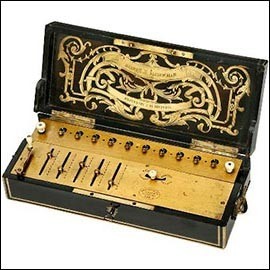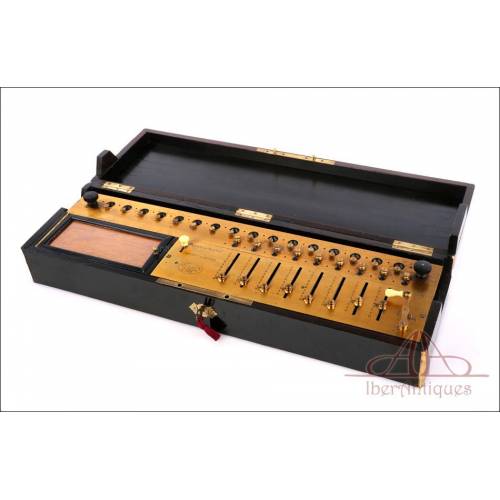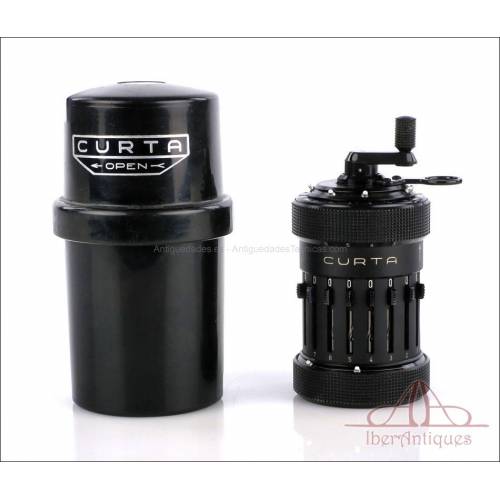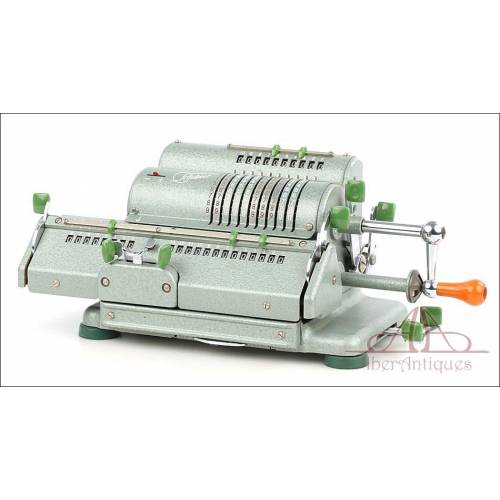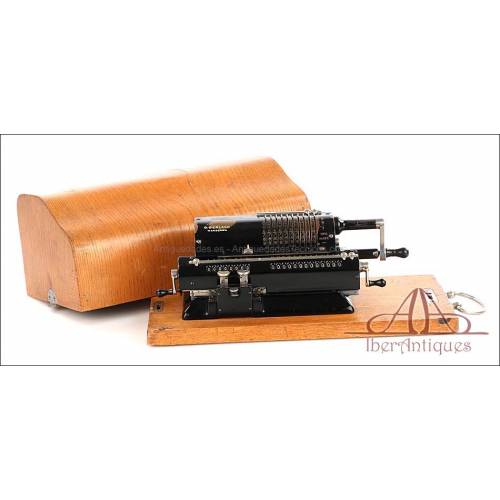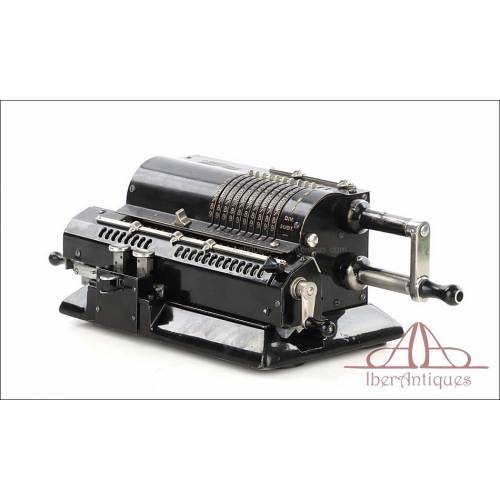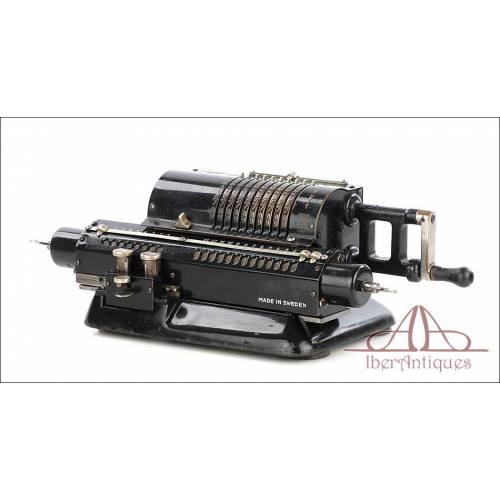Antique Mechanical Calculators
Ancient calculators
In the abacus, the slide rule and other inventions is the origin of calculators. The definitive overcoming of the abacus begins in the 17th century. In the early 19th century, Charles Xavier Thomas of Colmar invented the arithmometer based on the inventions of Pascal and Leibniz. In the 17th century, Pascal had invented a cal...Ancient calculators
In the abacus, the slide rule and other inventions is the origin of calculators. The definitive overcoming of the abacus begins in the 17th century. In the early 19th century, Charles Xavier Thomas of Colmar invented the arithmometer based on the inventions of Pascal and Leibniz. In the 17th century, Pascal had invented a calculator called the pascaline and Leibniz had created a mechanism of mechanical calculator that was called the arithmometer.The arithmometer
Perfected by industry in successive models, the arithmometer, reached full force in the 19th century and its use declined in the first half of the 20th. This metal mechanism inside a wooden or aluminum case is robust, beautiful, scarce and in demand. A benchmark in the industry that currently honors any collection is the Odhner arithmometer, invented in Russia in 1874 by Willgodt Theophil Odhner. The Felix calculator is related to the Odhner. After the Russian Revolution in 1917, Odhner's descendants emigrated to Switzerland and the Russian state nationalized Odher's arithmometer. In 1924, Felix Dherzhinsikye, creator of the Cheka, which later evolved into the KGB, used Odhner's design to manufacture calculators in Moscow until 1978.The comptometer and other antique calculating machines
The comptometer and comptograph competed with the arithmometer from the late 19th century and outlived it until the 1970s. They operate with keys, instead of the windlass that drives the arithmometer mechanism. They are faster, lighter and smaller. In wooden, metal or aluminum cases, mechanical or electric, they are practical, compact and elegant. Introduced in 1948, the Curta is a variant of the arithmometer appreciated by lovers of antique calculating machines. Invented by Curt Herzstark, a prisoner of the Nazi concentration camp of Buchenwald, this portable mechanical calculator tests the power of will and creativity. The dramatic circumstances in which it was created perhaps explain its beautiful hermeticism. Among the rarest in this section, it is not surprising that collectors covet it.The makers of antique calculators
The Germans excel in the manufacture of antique calculating machines. Outstanding among them are Brunsviga, so called because it operated, between 1892 and the 1960s, in the German city of Braunschweig; Thales, which manufactured between 1911 and the late 1960s; Triumphator, which, founded in 1900, operated until 1965; Lipsia, which made calculators between 1914 and 1954; and the Mercedes-Euklid brand, which opened in the early 20th century and from 1945 turned to electric calculator technology. Other manufacturers were the American Burroughs and, in Russia, Odhner.The mechanical calculator as a collectible antique
Beginning in the 1970s, electronic calculators displaced mechanical calculators. Because they are mechanical and because of their incredible quality, antique calculators are still useful. And above all, they are collector's items noted for their majesty, beauty and historical value.Antique Thomas de Colmar Arithmometer, N/S: 709, Paris, France, ca. 1870 Antique Thomas de Colmar...
Antique Thomas de Colmar Arithmometer N/S: 709, c. 1870. Working. Rare model with ebonized Napoléon III case. Museum-quality piece. Antique Thomas de Colmar Arithmometer...
SoldExtremely Rare Curta I Calculator. Made in 1970, Final Year of Production Extremely Rare Curta I...
Extremely rare Curta I made in 1970, the models final production year. Fully functional. A unique chance for collectors and tech lovers. Extremely rare Curta I made in 1970,...
SoldAntique Schubert Mechanical Calculator Mod. DRV. Germany, 1960s Antique Schubert Mechanical...
Nostalgic Schubert DRV pinwheel calculator in striking condition. It is like new and works really fine. Collectors piece. Nostalgic Schubert DRV pinwheel...
SoldAntique Original Odhner Mechanical Calculator, Model 27. Case and Key. Sweden, 1930s-40s Antique Original Odhner...
Complete Original Odhner 27 calculator with case. In striking working order. Beautiful piece. Complete Original Odhner 27...
SoldAntique Original Odhner Mechanical Calculator, Model 27. Sweden, 1930s-40s Antique Original Odhner...
Superb Original Odhner calculator model 27 in amazing working order. In very good condition. Superb Original Odhner calculator...
SoldAntique Mechanical Original Odhner Calculator, Model 6. Sweden, 1920s Antique Mechanical Original...
Gorgeous Original Odhner 6 calculator from the early 20th century. In excellent working order. Gorgeous Original Odhner 6 calculator...
Sold
New products
-

Antique ivory and silver plated stethoscope, late 19th century
Antique stethoscope from the late 19th century in silver-plated metal...
-

Vintage pendant with shell cameo of Jesús del Gran Poder, carved c. 1970
Vintage pendant with a shell-carved cameo of Jesus del Gran Poder, circa...
-

Antique Roman Style Gilded Silver Chalice with Paten. France, 1932
Antique Roman-style chalice in gilded silver with paten. France, 1932....
-

Beautiful Antique 18 K Gold Ring with 7 Natural Diamonds
Antique 18K gold ring with 7 natural diamonds. Delicate openwork design,...
-

Antique Silver Reliquary. José Vilaplana. Valencia, Spain. Circa 1920
Impressive repoussé silver reliquary by José Vilaplana, Valencia, c....
-

Vintage 18K Gold Ring with 7 Natural Diamonds
Vintage 18K gold ring with seven natural diamonds in floral setting....
-

Antique Silver Chalice. Enameled Crosses. Valencia, Spain, 1942
Spanish chalice from 1942 in solid silver, gifted by the Church of...
-

Antique Silver Chalice and Paten. Granada Spain, circa 1900
Spanish chalice in white silver with matching paten, handcrafted....
Specials
-

Antique Silver-Plated Metal or Alpaca Chalice. Zaragoza, Spain, Circa 1950
Fine Spanish chalice from the...

